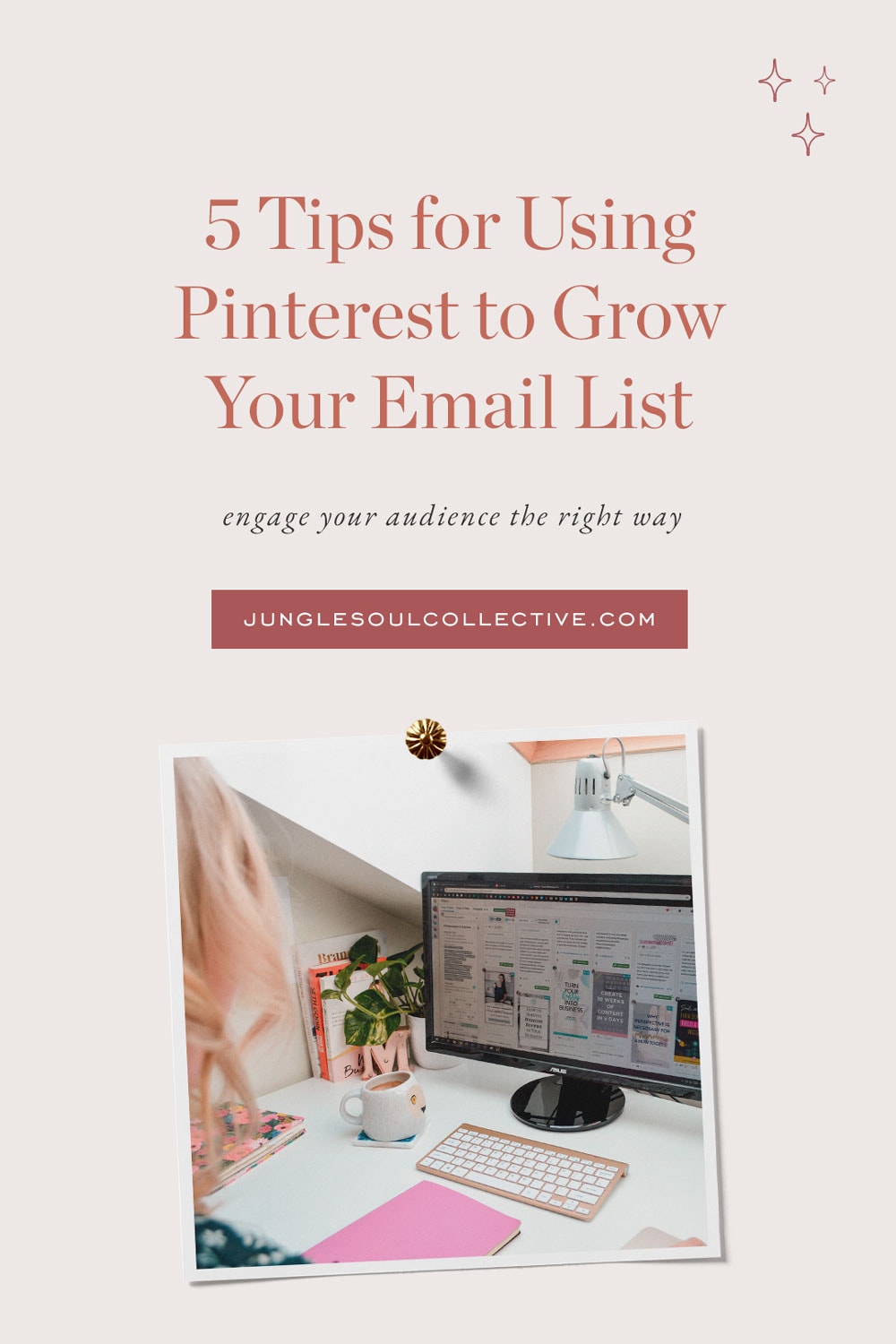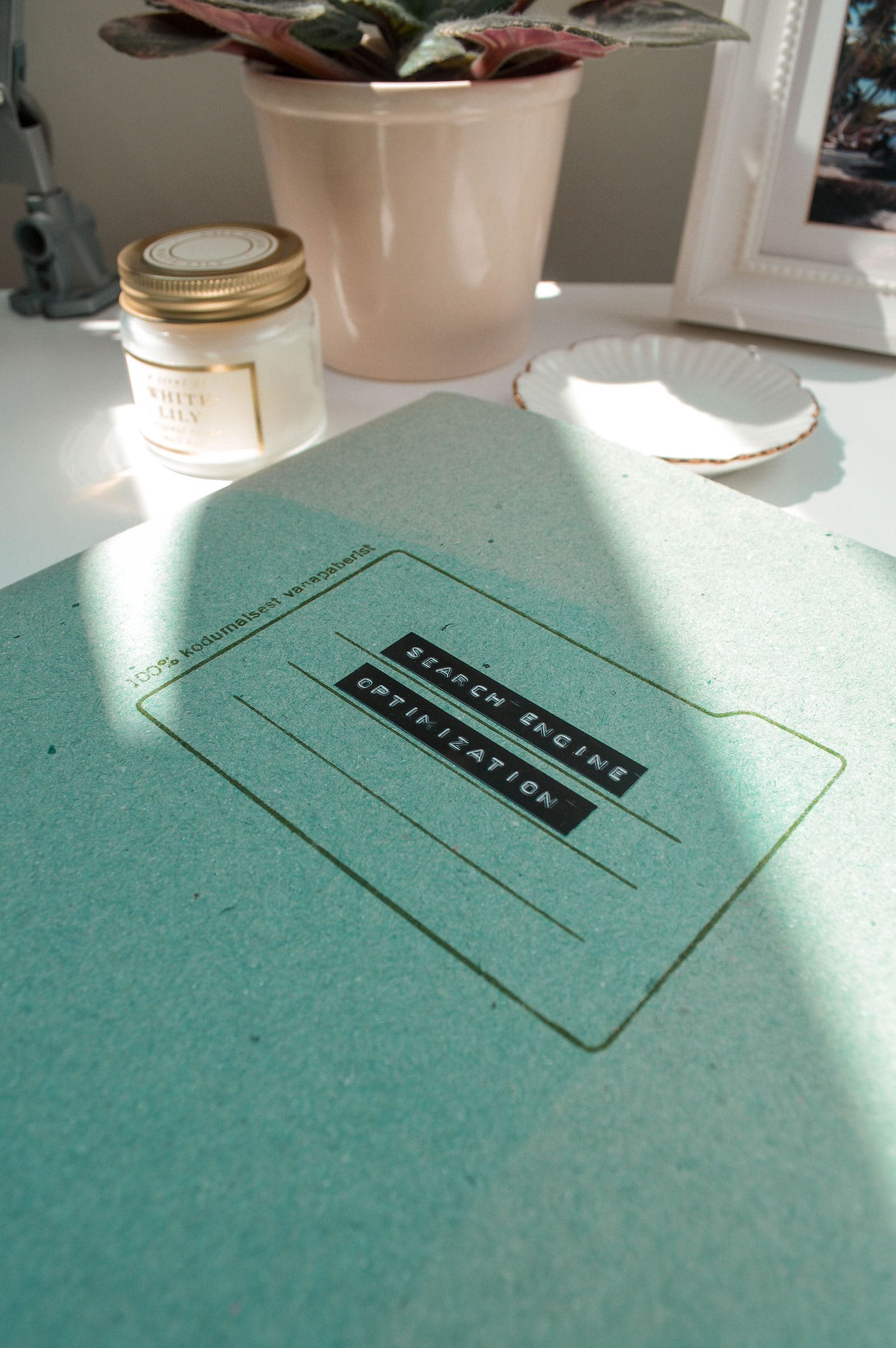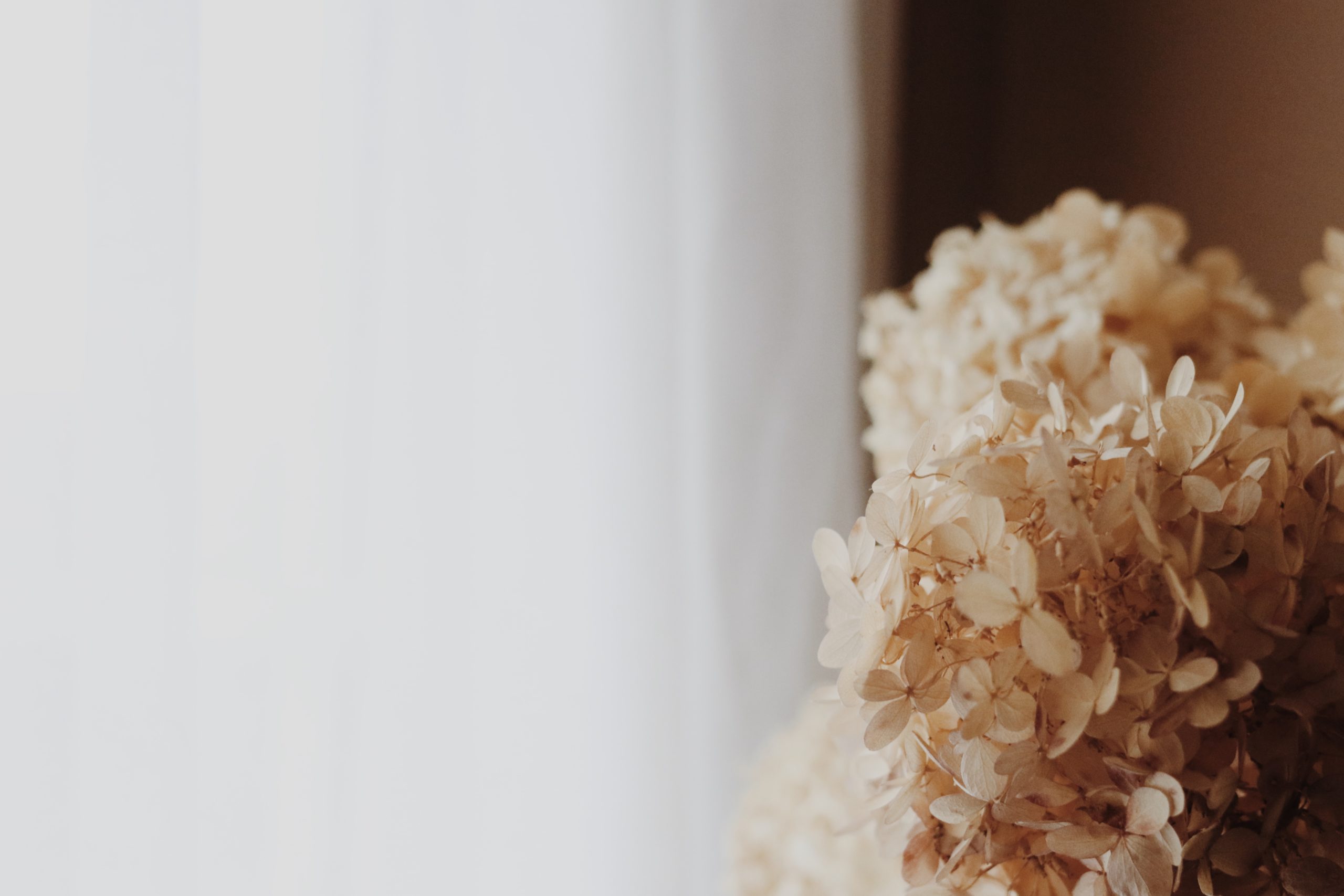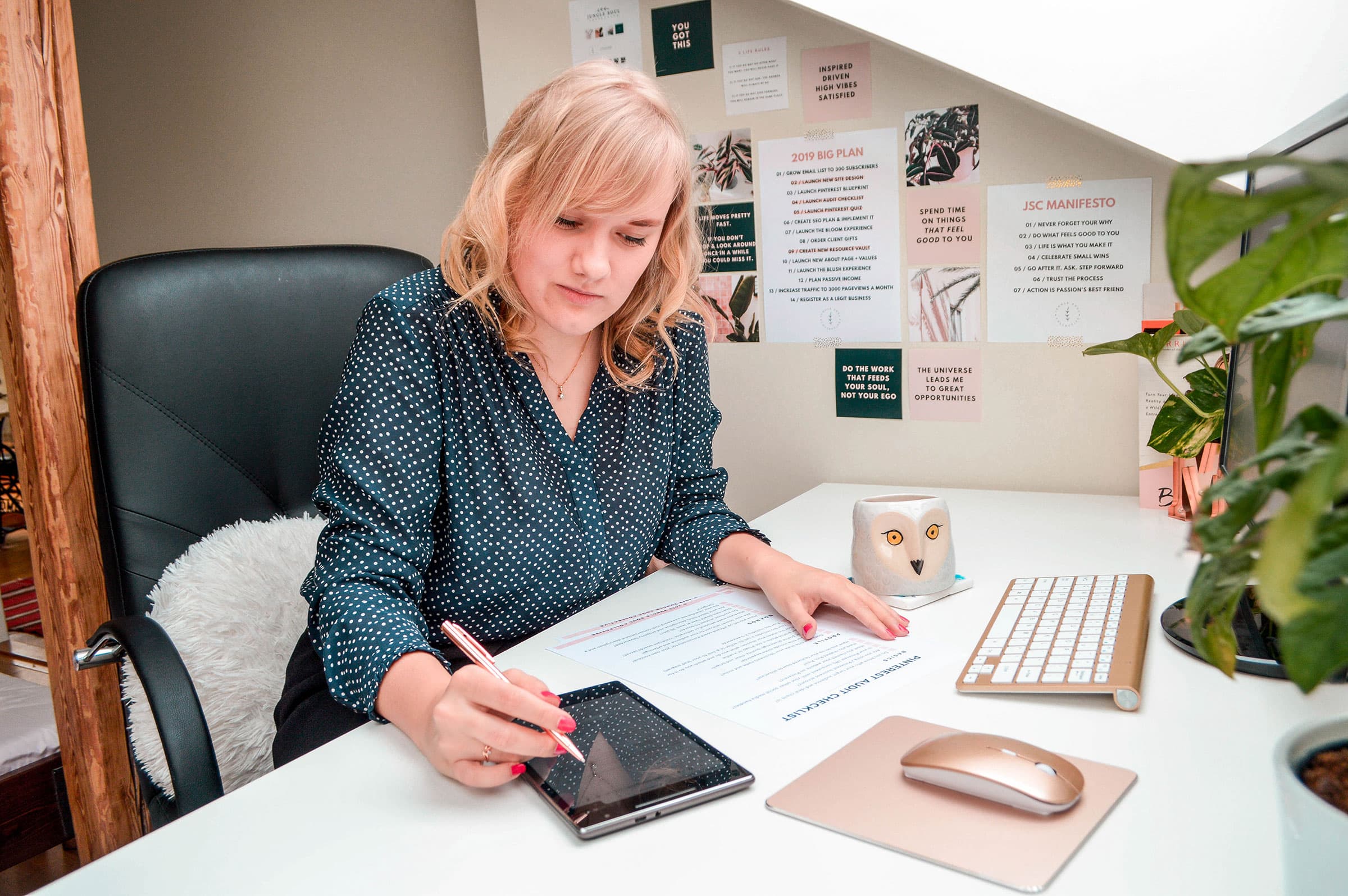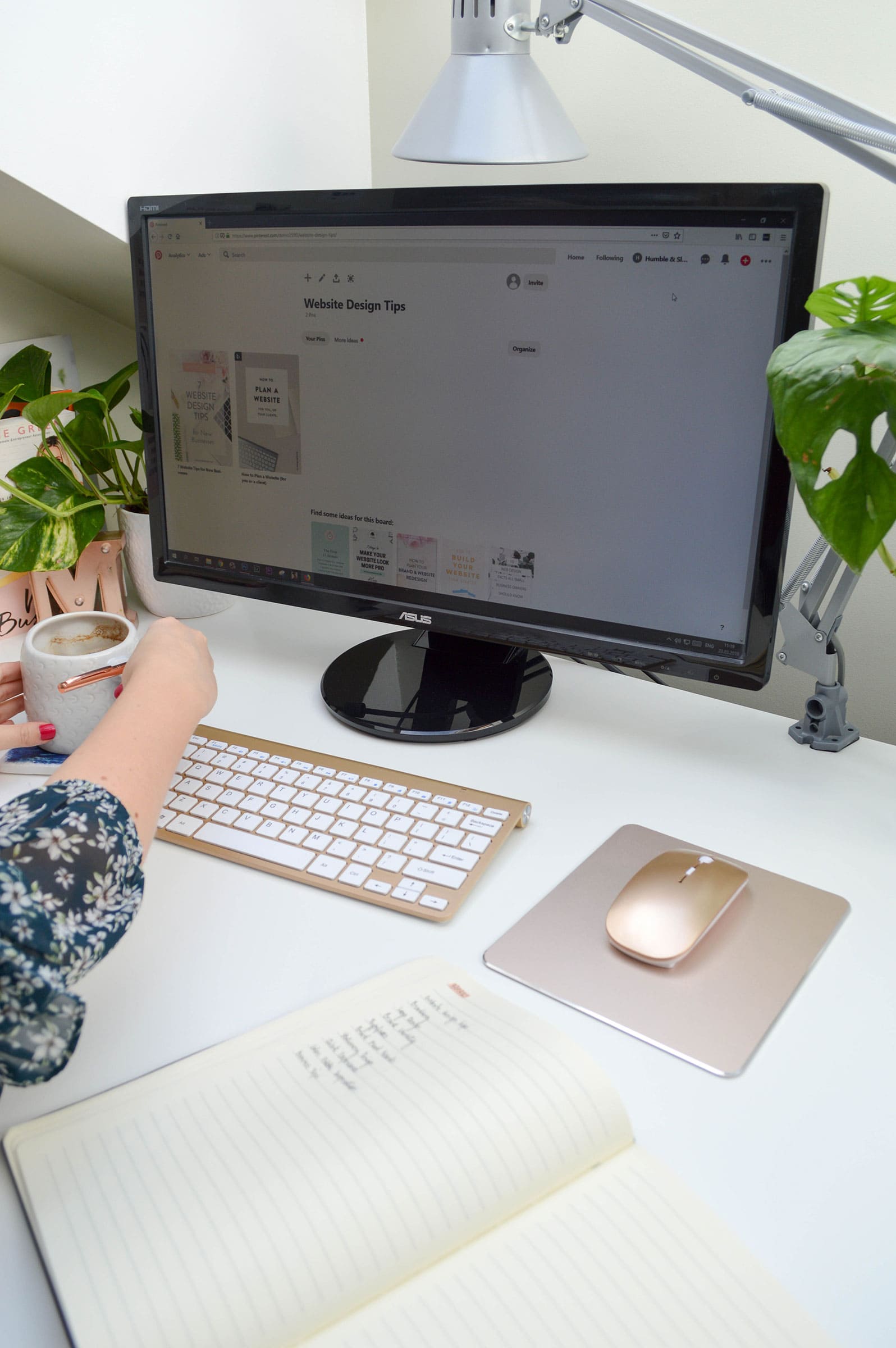Pinterest and email marketing are the power duo every B2B service-based business needs. Email marketing is far from dead and continues to be one of the most successful ways to attract and engage an audience.
Pinterest, on the other hand, is a powerful visual search engine on a mission to serve pinners looking for inspiration with the best content available.
This post was originally written for the JumpStory blog in March 2020.
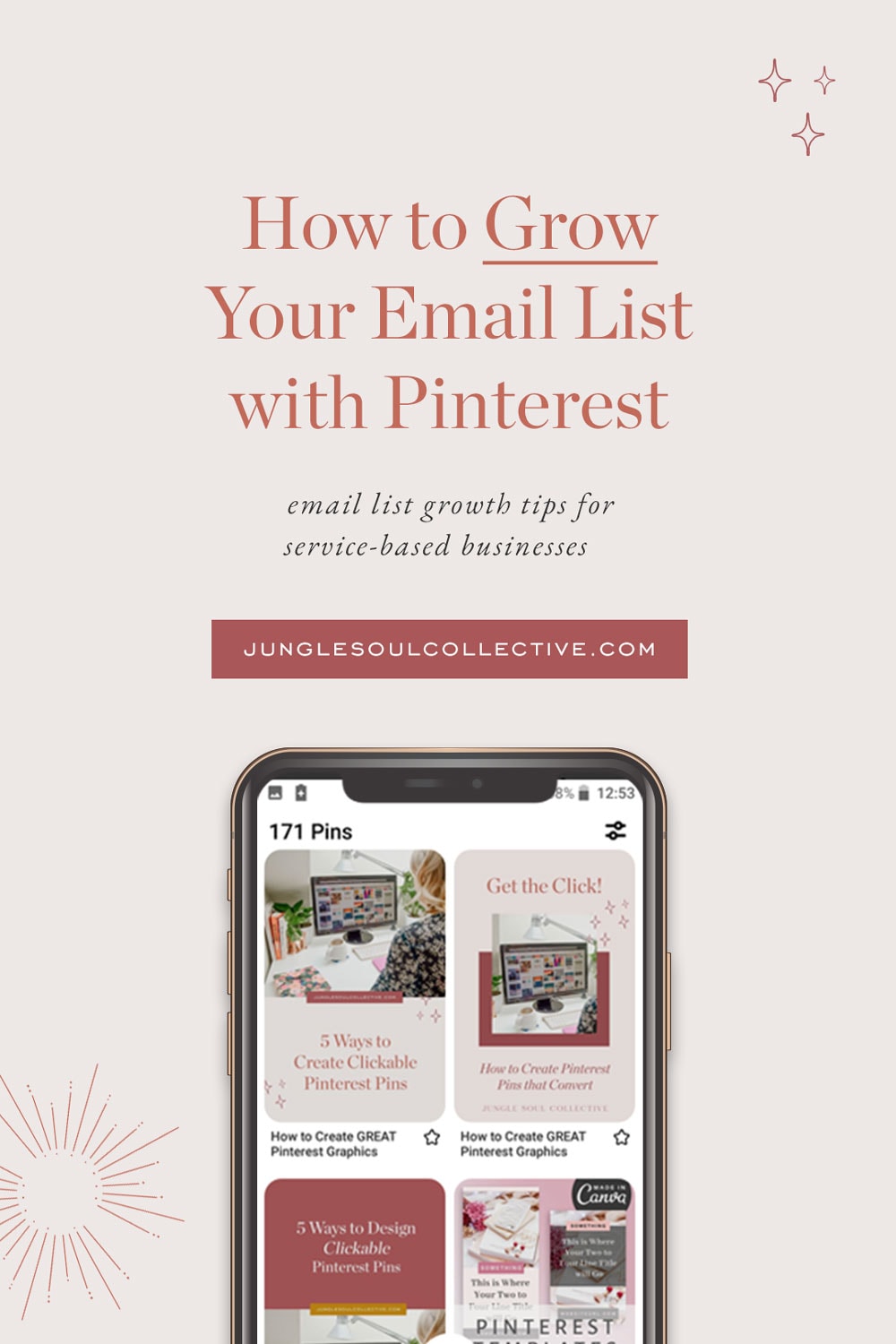
What You Need to Know About Using Pinterest to Grow Your Email List
Pinners are looking for solutions and they’re ready to take action, making Pinterest the perfect place to grow your email list. According to Pinterest stats, over 300 million people worldwide use Pinterest every month. 84% use Pinterest when deciding what to buy, and 98% have tried something they found on Pinterest. Social media is for connection and inspiration, and Pinterest is for action-taking.
1. Start with your audience in mind
Marketing on Pinterest always starts with your audience. Pinners are more self-focused than social media users. They are thinking about solving their own problems and care about if and how you can help them. But they’re also action-takers.
The best way to approach your audience on Pinterest is to make it about them.
Growing your email list with Pinterest starts with getting clear on your niche – the person you serve and the problem you’re solving. This is the foundation your business needs to have before you can build a converting lead magnet that attracts the right people. If you can’t pinpoint who you’re serving and how you help them, you’re going to send out mixed messages and attract the wrong audience.
Getting clear on your niche also means making sure your content strategy hits a sweet spot. Is it super valuable for your audience while also helping you achieve a business goal by leading your audience through the funnel?
Why use a lead magnet to grow your list with Pinterest?
Your lead magnet is an enticing reason for your audience to sign up for your list. You have something your audience wants and they’re willing to exchange their email in return for that information. It provides instant satisfaction and a quick fix for a problem. A lead magnet works best if it solves one specific problem for one specific person. After all, to get signups, it needs to speak to your audience and spark a need.
Another thing to note is that if your lead magnet is created with a specific person and problem in mind, it will also be in line with your paid offer(s).
What kind of lead magnet to create?
It depends on your audience and offers. A good way to get an insight into what your audience is struggling with is to conduct market research in Facebook groups where your audience hangs out. Ask your people on Instagram, and pay attention to Google results (what questions come up the most?). Take a look into your analytics – what is your most popular blog post? What questions are your clients always asking?
2. Extend your brand with a converting landing page
Every digital marketer knows that a landing page is built for one purpose only. Everything on a landing page is put there to persuade and attract the visitor to take action and sign up. With a click of a button, a visitor is transformed into a tangible subscriber you can serve and build a connection with.
Effective landing pages are known to be minimal, distraction-free, and straight to the point. When it comes to using Pinterest to grow your email list, we also need to talk about the importance of making landing pages an extension of your brand.
The problem I’ve noticed with using some third-party landing page builders and lead gen software is that they’re not customizable enough, leaving your landing pages looking different than the rest of your website. Just because you don’t link them directly on your site, does not mean your landing pages can look like they belong to another business altogether.
Making a brand impression
In marketing, your first interaction with your audience is the most critical time to make a brand impression. For visitors finding you on Pinterest, your brand experience starts with your pins, continues on the landing page, and flows through the rest of your customer journey.
Implementing standard brand consistency is important throughout the entire customer journey. The way your landing page presents your brand should be aligned with the rest of your website.
Some ways you can keep brand consistency on your lead magnet landing page:
- Use similar page structure and layouts
- Have custom fonts on your website? Use them on the landing page as well
- Color scheme (color increases brand recognition by up to 80%)
- Custom domain.
3. Share irresistible pins
Brand consistency is also an important part of creating irresistible pins that drive traffic to your lead magnet and content.
There are two key elements to creating a great pin: keywords help your target audience find your content, and graphics will entice them to click through.
Keywords
Knowing how to describe a pin with correct keywords makes all the difference and takes us back to knowing your audience and the phrases they would use. Pinterest is great at sending the right people to your content, but you have to feed it the correct keywords first.
To increase the success rate of your pin, write a smart pin description that includes at least 2-4 niche-specific keywords about the content of the pin and at least 1-2 relevant hashtags.
The pin description has two purposes: managing expectations and giving a preview of what the user will find when they click. What is this pin about? What can the pinner expect? Pinterest has recently made it clear descriptions that don’t represent the content of the pin are deemed less valuable – only promise what you can deliver.
Graphics
Being a visual search engine, Pinterest is a bit superficial. The look and copy of your pin determine how likely your audience is to slow the scroll and click.
Pinterest says it themselves: “The best Pins are visually compelling, tell a good story, and make people want to learn more.”
You also want pinners to start associating your pins with you. Building brand recognition takes time, but we can accelerate the process by always creating pin images that not only communicate the value of your content but represent your brand in the best way possible.
So how can you create images that do the bulk of the work for you?
- Start by creating pins that are in the right size – make them vertical and in a 2:3 ratio (such as 1000 x 1500 pixels).
- Think of your pins as an extension of your branding and website – use your brand fonts, color scheme, and design elements. The transition from Pinterest to your site should be seamless.
- If you use images, make sure they are crisp, clear, and high-quality. Again, think about how the images represent your brand.
- Include your logo or URL.
- Play around with text overlay. According to Pinterest, copy on your text overlay “makes your pins stand out, adds context, and enhances your message”. Keep it concise, but induce curiosity!
- Show them what they’re getting – include a mockup!
- 85% of Pinterest users are on mobile – always test the legibility of your fonts.
- One is not enough. Brainstorm alternative copy, change the layout, and keep testing to figure out what resonates best with your audience.
4. Turning visitors into subscribers
The landing page isn’t the only place a visitor can sign up for a free resource. Most service providers include sign-up forms in different high-traffic areas of their website, including blog posts.
Visitors coming from Pinterest have different landing spots and moving trajectories. The process of taking a visitor from point A to point B is not always linear. Your task as the content creator is to know the goals your website has to accomplish and optimize it for conversions to make sure visitors are guided throughout their stay.
5. The art of following up
You have a new subscriber. What’s next? Whatever you do, don’t disappear off the face of the earth.
Some service providers get stuck because of their goodwill and perfectionism. What should I send? What is the right thing to say? How can I send the best emails? They overthink the welcome emails to the point of scaring themselves out of sending anything at all.
Contacting a new subscriber is so necessary it’s better to do it scared and imperfectly than not at all.
Studies have shown that your subscribers are most engaged with your brand within the first 48 hours of subscribing. According to Campaign Monitor, welcome email open rates are on average 42% higher than regular emails and have a 26,9% clickthrough rate. Welcome series is effective because you are fresh in your new subscribers’ minds, and they are expecting something in return for their attention.
Your lead magnet is not free; it costs an email address. Nowadays inboxes are oversaturated with marketing messages (this study says the average subscriber gets 13 commercial emails a day), and serving before selling is relevant. Informational and value-based emails that introduce the new subscriber to your brand are more appreciated than ever.
So do it scared! Show up consistently to get them used to seeing your name in their inbox and engaged with your brand.
Before you go, pin this post for later!

